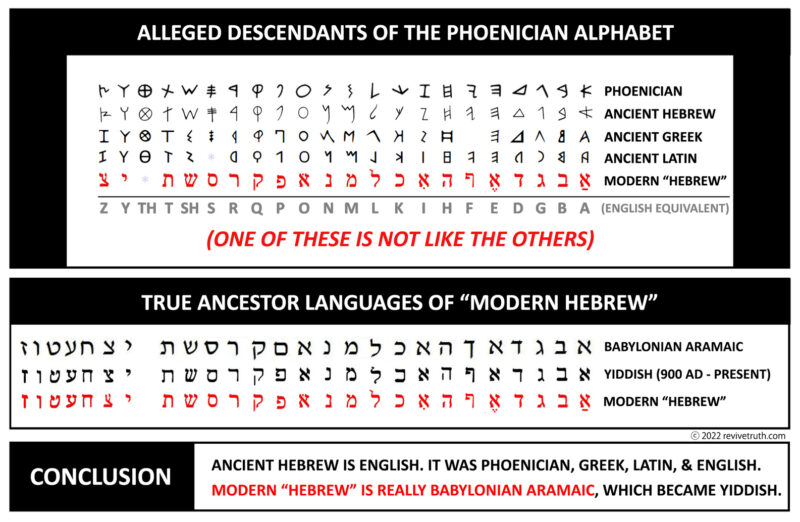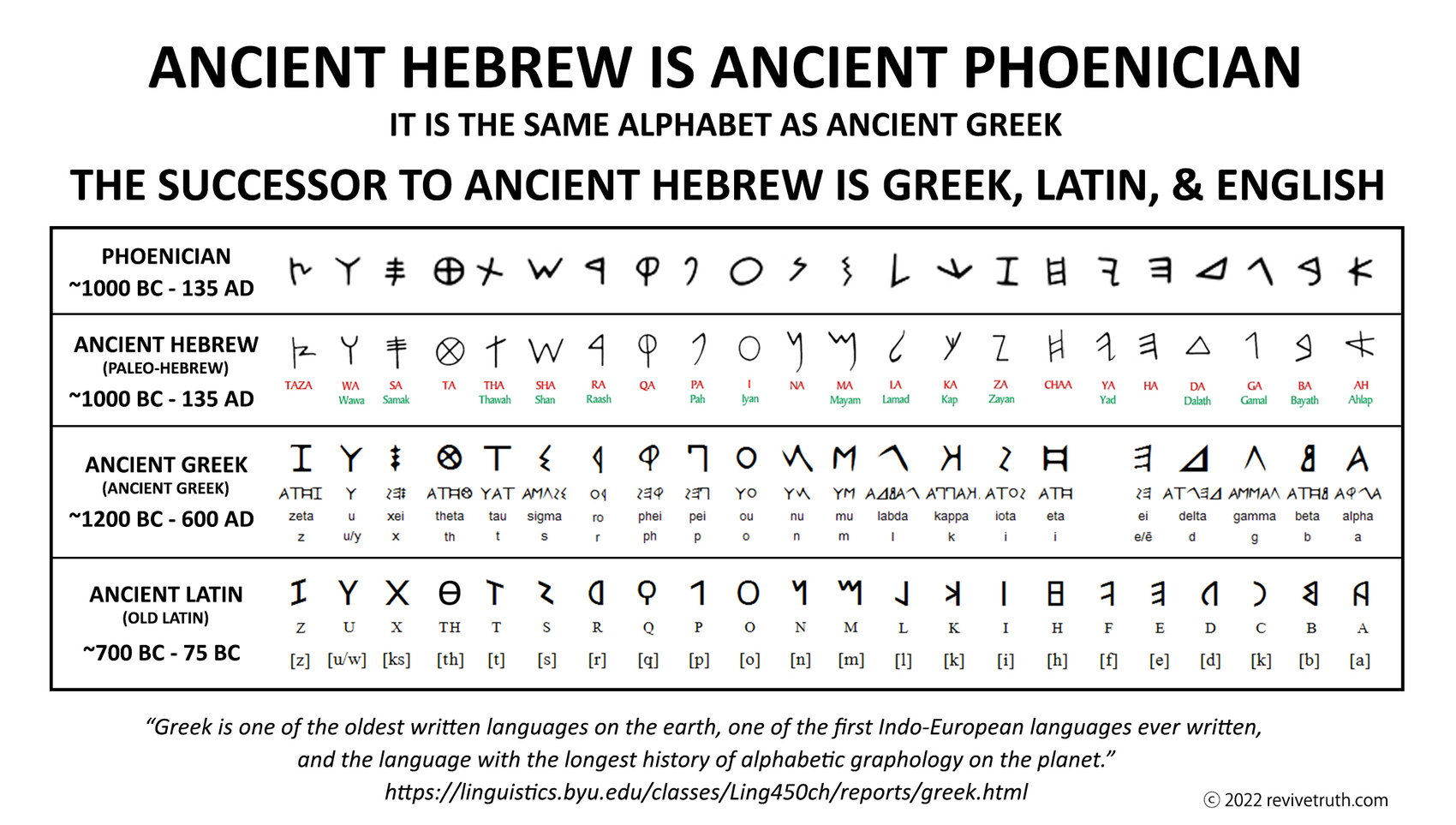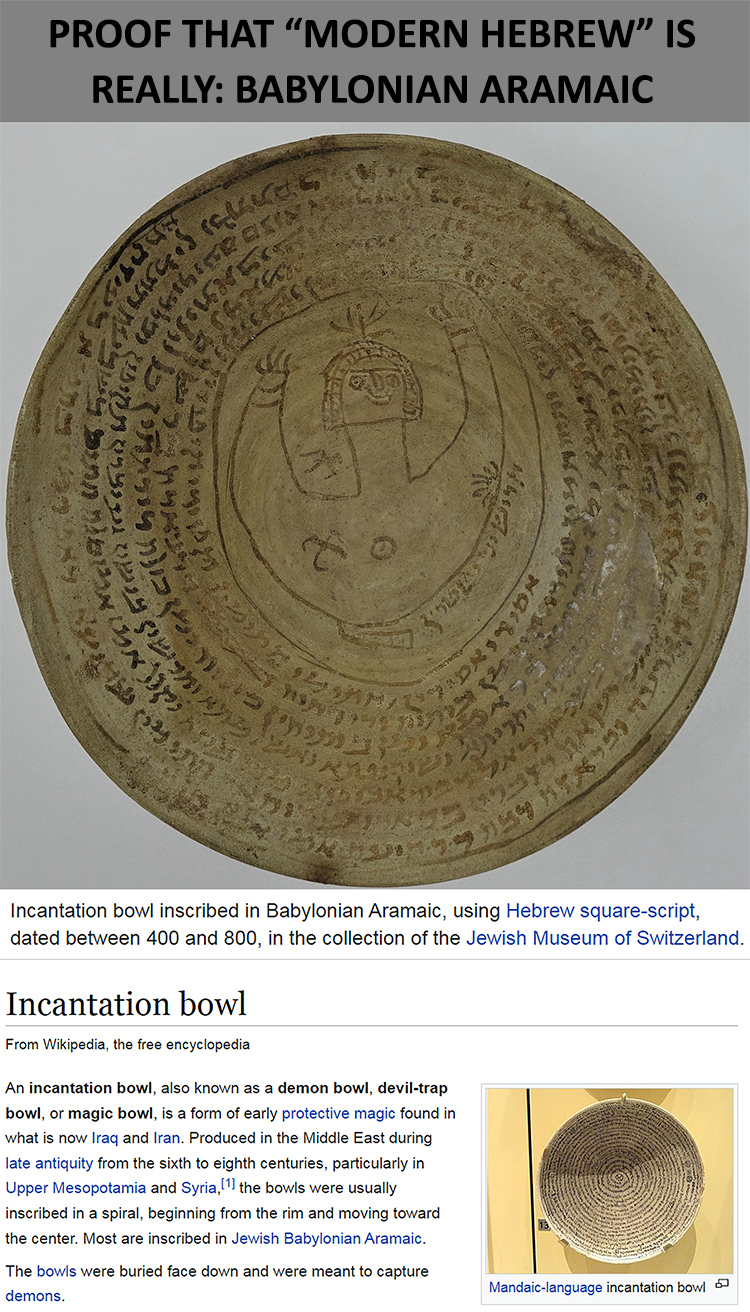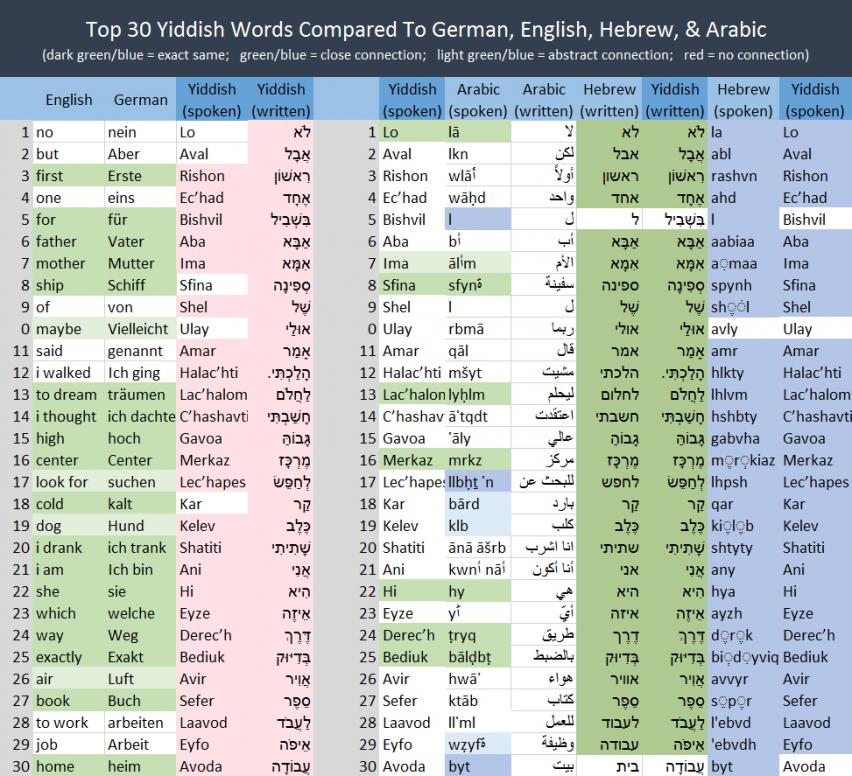Mindblowing research. Took me a long time to make all this. I had to actually learn some Modern Hebrew, Greek, and learn the phoenetic sounds of each letter to actually make this.
The conclusion is undeniable.
Modern Hebrew is really Babylonian Aramaic, which became Yiddish.
Ancient Hebrew was really Ancient Phoenician, and became Greek, then Latin, and today, English.
Because of this, all European languages which use Latin and Cyrillic are the descendant languages of Ancient Hebrew, also known as Phoenician.
Upon research, finding the correct source for Aramaic was difficult, because there are many varieties, and many false claims. But ancient artifacts contain Babylonian Aramaic using modern “Hebrew” known as “square-script”, which is the modern Aramaic we see today.
However, shockingly, regular ancient Aramaic looks like the others, while Babylonian Aramaic looks completely different and matches Yiddish and Modern “Hebrew”.
Pictured below is an artifact containing Babylonian Aramaic, from Wikipedia with a caption, and an article about what this artifact is. It is a satanic witchcraft object, a Babylonian incantation bowl showing square script exactly the same as Modern Hebrew, as Babylonian Aramaic.
The evidence is undeniable. Modern Hebrew is a forgery and cannot be the language of the ancient Israelites. It seems that the Ancient Hebrew language has been lost forever. The most terrifying implication of this is that the “Hebrew” Bible, which is written in square script (Babylonian Aramaic) is in fact not the original Bible, but a forgery. Because of this, I recommend no other original text for doctrine but the Greek Septuagint LXX, written 300 years before Christ.
Christ himself and the apostles who wrote the New Testament directly referenced the Septuagint, but never the “Hebrew” version of the text. Why? Because most likely it had been lost, and the Septuagint was the accepted version of the Bible in Jesus’ day. It’s very possible that the Modern Hebrew square script version of the Bible is in fact not the text written by Moses and the Prophets, but a modern forgery written centuries after Christ.
Update:
Modern Hebrew/Yiddish Related To Arabic, Not German
Added on: Jun 13, 2023
I researched the top 30 words in Yiddish and compared it against German, English, and also Arabic and of course “Modern Hebrew”, including both written and spoken for the non-latin characters, to see if the claims of Modern Hebrew/Yiddish really had any similarity to German.
It should be noted that until the 19th century, Hebrew was a dead language. It was revived by the people claiming to be Jews who sought to re-establish the 1900-year-dead Kingdom of Israel, in the land of Palestine. Written “Modern Hebrew”, as shown by my previous research, is the exact same language as Babylonian Aramaic.
Aramaic was the language of ancient Ninevah, which was, by the way, so hated by the Ancient Israelites that Jonah, when called to preach to the Ninevites about their impending destruction by God, disobeyed God, got on a ship to go the other way, and ultimately, when God sent a terrible storm, told the shipmen to throw him overboard to drown.
As the story goes, Jonah was swallowed by a big fish or whale for 3 days, and then spit upon the shore, where he begrudgingly preached to the Ninevites who turned from their wickedness and repented. Jonah was actually angry that they repented and were saved, so he asked God to kill him. What became of Jonah after is not written in the Bible.
So this is the city, a terrible enemy of Israel, who spoke Aramaic: the Ninevites. Later, Aramaic is shown to be used in Babylon, as shown by the satanic incantation bowl with the square script known as Babylonian Aramaic.
As it so happens, this same written language, an arabic language known to be used by some people in Babylon (Babylon was in modern-day Iraq in the Middle East) is in fact the exact same alphabet letter-for-letter as Modern Hebrew. Therefore, Modern Hebrew is effectively the same language as Yiddish, which is effectively the same language as Babylonian Aramaic.
When you research, you will find that it is stated that Yiddish is a German dialect of Modern Hebrew, but in fact there is nothing at all Germanic about it.
Modern Hebrew More Distantly Related To Arabic
The surprising thing is that Modern Hebrew/Yiddish shares a lot of distant similarities with Arabic rather than with German. At least in the top 30 words in Modern Hebrew/Yiddish have no similarity to German, but are virtually identical to each other, and strikingly similar to Arabic, thereby lending credibility to the theory that Modern Hebrew/Yiddish is in fact an Arabic language instead of a Germanic language.
Modern Hebrew/Yiddish are known to be part of the so-called Semitic language family, which includes some north African languages, Egyptian, and others, although most of the Middle Eastern/African languages have been erased and replaced with Arabic due to Muslim/Turk conquest during the majority of the last millennia.
So what really is Yiddish? Yiddish, besides being apparently related to Arabic, was the official language of the Khazars. The Khazars were a people that were known as identity stealers and name stealers, who would kill travelers and passerbys and assume their identity.
Around the 6th century, they were a huge kingdom including most of modern-day Ukraine, and by the 8th century it is well-documented that they converted officially to Rabbinical Judaism – the same religion as today’s professing Jews.
So today’s Jews speak the language of the Khazars, have the religion of the Khazars, the name stealers, and just a century ago revived the dead Hebrew language – or so they say – and used their own language, Yiddish, as today’s Modern Hebrew.
It seems quite apparent what really happened. The Khazarians, the name-stealers and identity-stealers, sought to re-establish their Khazarian kingdom, and used their own language to pretend to be the Ancient Israelites, assumed their identity, and used this as a basis to spread alleged Judeo-Christianity, except that Judaism is really Satanic Babylonian Talmudism and is diametrically opposed to Christianity; and they are not the Ancient Israelites, and “Modern Hebrew” is not Ancient Hebrew.
Ancient Hebrew, on the other hand, was likely the precursor to German, as Ancient Hebrew looks identical to Ancient Phoenician, which is almost identical to Greek, Latin, and then the Germanic languages. And who are the true Ancient Israelites? If they still exist today, they are not likely the identity-stealing Khazars who today call themselves the Jews.
Footnote 1
Footnote 1 about the Western Yiddish dialect and the deception of speaking Yiddish with a German accent, as well as the deception of speaking the German language in a dialect of Yiddish, and pretending falsely they are speaking Yiddish when in fact they are speaking a pure German dialect.
This post talks about original Yiddish. Yiddish is a language which the name-stealers spread throughout the globe stealing identities of people and adopting their identities, yet they retained their languages in their new countries. Over time the language took on characteristics of the host countries that they migrated to. Because of this, it has been said that Yiddish has had the largest amount of dialects and the most widespread language in the world.
There is a dialect of Yiddish called Western Yiddish, which was predominantly used by the Khazars who lived in Germany in the 19th century. It seems that what occurred was that German blended with Yiddish for these Khazars living in Germany, and the two languages combined during this period making Western Yiddish, which significantly diverged from Eastern Yiddish.
Unlike what some people say that Yiddish itself came from German, it was actually the other way around: it is not that it is a German dialect of Yiddish with Hebrew thrown in – because Modern Hebrew is literally Yiddish – it is the fake Modern Hebrew language which is really Yiddish, which has some German elements thrown in to make it the Western Yiddish dialect.
So while there are some youtube videos of Jews speaking Western Yiddish (a form of Yiddish with Germanic elecments) with a strong German accent, this is all a deception. It is all part of the propaganda to make you believe that Yiddish is a Germanic language, when in reality it is an Arabic language of which a small amount of Jews who migrated to Germany took on characteristics of the German language.
The original Yiddish that is not Western Yiddish, or Modern Hebrew in Israel, you find that it actually sounds Arabic, not German.
Remember that one of the goals of the fake Jews is to erase all of German history, supplant it, and assume their identity, like their Khazarian ancestors did. That is exactly why they are trying to pretend that Yiddish is a Germanic language, when in reality it is an Arabic language of the “Semitic” branch of languages from North Africa and the Middle East. It is not a Germanic language.
What the name-stealers are doing is rewriting history, writing in their language to try to help legitimize their rights as the “chosen people” of Israel. But we know they are not, because they serve Satan – their holy book is the Babylonian Talmud.
Footnote 2
Here’s the truth. Fact is there is a German dialect spoken by Khazarian Jews who spoke German, and this dialect is not Yiddish but rather German. Real Yiddish is unintelligible to a German speaker. Here is a video of a man pretending to be a scholar but really speaking a German dialect, not Yiddish.
One of the commenters who is a professional Yiddish linguist and teacher had this to say:
Look in any Yiddish dictionary and you’ll discover the unique essence of Yiddish vocabulary.
There’s no sense comparing Yiddish with any German dialect; there is no comparison.
Consult my comment in Mr. Madenford’s site on Pennsylvania German and Yiddish.
You will find twenty authentic Yiddish sentences taken from literature and the spoken language. No speaker of German or any German dialect can understand them. Spoken and written Yiddish has thousands of sentences like my examples. E. g. AF DER KHASENE HOBN DI KLEZMORIM ZEKH ONGIZHLYOKET MIT MASHKE. Or a simple sentence like: HULYE KAPTSN! There is much more to Yiddish than its Germanic component, which can be very different from any form of German. What about the thousands of Yiddish words whose components have different origins: FARMEYEKHT, OISGIMUTSHET, TSEBUSHEVET, TSUGIGANVET, IBERGIPLONTERT, DERKAZHEN, BAGAZLENEN, UNTERKOVEN, IBERSHEPTSHEN ZEKH, FARPRAVEN, FARMANYEN, BAZHALKEVEN, TSULATKHENEN, TSEBLISHTSHEN ZEKH, FARKHMARET, ONGIKHMURET, FARTSIREVEN, OISKEREVEN ZEKH, FARLYAPEN, IBERKHAZERN. Look these words up in a dictionary. You haven’t even scratched the surface.
P. S. Mr. Glasser’s “performance” is not an example of authentic, unadulterated Yiddish and it has nothing to do with YIVO, which is mainly an English-speaking organization at the present time. [This comment has been written by a professional Yiddish (Slavic and French) linguist whose native language is Yiddish. He has taught authentic Yiddish to thousands of college students and was a Yiddish journalist for many years. ]
Here is the German-Jewish dialect video, while pretending this is Yiddish, it’s actually completely German. I’m learning German myself and this is clearly German and not a foreign language. In fact the subtitles are in German and he is speaking the exact thing in the subtitles – German. Not Yiddish.
https://www.youtube.com/watch?v=bgZSzlynJQ0






